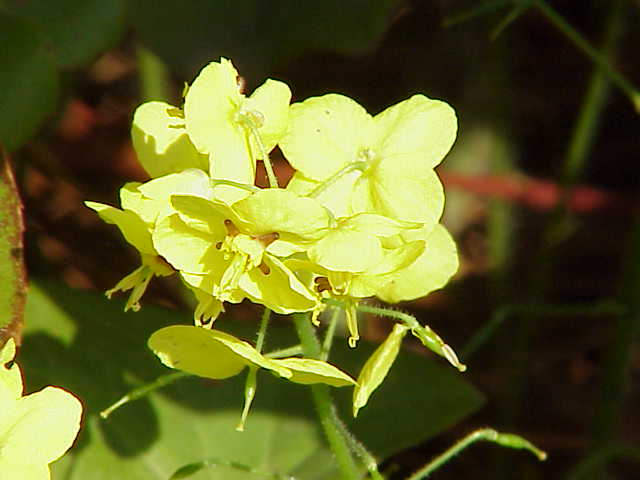Home
›
Berberidaceae
›
Epimedium (bishop's hat)
Leaves:
- ternately compound
- cordate
- serrulate, can have sharp points
- palmately veined
- petiole is long thin and wiry-looking
Flowers:
- small, nodding in inflorescences
- radial
- perfect
- yellow, purple, pink, or white
- sepals, 2 whorls of 4 each, outer ones fall early, inner ones petal-like
- petals 4, flat or spur-like
- stamens 4, anthers open from flaps at the base
Fruit:
- capsule w/ several seeds
- seeds have fleshy aril
- not commonly seen
Other notes:
- perennials 0.5-1.5 ft.
- evergreen or deciduous ground-cover
- has creeping rhizomes
- in gardens:
- good in dry shade
- cut back in late winter to early spring for nice looking growth
- botanical supplement widely used as a tonic, aphrodisiac and anti-rheumatic in China, Japan, and Korea for more than 2,000 years
- genus name is of unclear origin and meaning
- pinnatus – Latin for feathered in probably reference to leaf shape
Ecology & Adaptations:
- example in the WA Arboretum: E. pinnatum ssp. colchicum ‘Thunderbolt’
- Native to Armenia, Azerbaijan, Iran, Turkey
- found in the woodland areas of the Caucasus Mtns near the Black Sea and Caspian Sea
- very shade tolerant:
- thin leaves create largest light-absorbing area possible with minimal investment in leaf tissue
- leaves oriented horizontally to capture light
- evergreen leaves permit photosynthesizing before canopy leaves emerge overhead.
- drought tolerant
- in E. pubescens, relative water content decreases slightly but is otherwise maintained above 70%
- membrane degradation is prevented via the production of cell defense enzymes
- Vegetative reproduction via rhizomes forms clumps
- pollination by bees Compounds (glycosides, etc.) prevent microbial infection and help defend against herbivory

